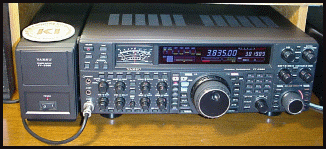Sangean HDR-16 HD Radio/FM-Stereo/AM Portable Radio

A few years ago, I discovered HD radio and I immediately liked it! Esp if you like classical radio, HD is about the only
place you can find it today . . . for FREE!
When I saw that Sangean was about to release their new HD radio, I signed up! But as you know, it took quite some time before
it was actually released, about 6 months later. I personally think it needed another 6 months of engineering before it
should have been released. Even though I like it, it still lacks needed improvements.
It gets only three (3) stars! Here are the needed improvements.
1) The outside case is "shiny" black. It should have been a dull/satin finish case that is the same as the topside of the
case. It's not necessary to show "finger-prints"!
2) The storage buttons (5) should be under the case carry strap so that you can access the channels WITHOUT having to look
and FEEL for the channel buttons. If mounted as recommended, you would only need to FEEL for the correct button.
3) It should remember your LAST setting. For example, if it was the CLOCK, then it should remain so when changing channels.
Pressing the INFO button will allow you to change the function displayed.
4) Should have rechargeable battery capability. It's easy to do; a diode and some slight wiring changes would make it a
re-chargeable radio! Also it is not that easy to replace the batteries b/c of the smaller than needed battery "door".
5) Forgets the HD channel that it was tuned to when turned-off. If you were listening to an HD2 channel when you turned it
off, it tunes to the HD1 channel when turned on. Not nice!
6) The signal strength function shows as line of sixteen (16) "boxes" across the bottom of the display. A better signal
strength function would be 3 or 4 vertical bars as used in cell phones. The present indication does not show a "full-quieting"
signal. Since the radio doesn't switch to the FM channel's known HD signal it must not be a full-quieting signal even though
all boxes are illuminated.
7) Backlight goes off with battery power. It doesn't consume that much energy so it should stay on. However, in DAYLIGHT,
the backlight can't be seen so adding a switch to make it a user optional feature or add a light-sensitive device
(photo-resistor) to do it automatically.
8) IF Selectivity*:
It appears that there isn't enough filter stages. It ACTS is if there is only one (1) IF filter stage
(230Khz) which makes it susceptible to close-by-channel interference. If this is correct, a better choice would have been
180Khz. The BEST solution is a front panel PUSH BUTTON with allowing the user to select WIDE / NARROW SELECTIVITY. With
NARROW, the adjacent-channel interference would be minimized with the (possible) loss of RDS.
* A simple yet effective method to check any FM radio's selectivity is to tune-off the selected station to see if it
still can be heard. So for KUSC @ 91.5Mhz, tune to 91.6Mhz and 91.4Mhz. If you can still hear the station, the radio lacks
selectivity.
9) Gain: The radio appears to have insufficient gain b/c the FM channels that SHOULD BE received in STEREO and/or HD, can't
be attained. LOCAL stations are OK but stations that are still decently strong, do not even light the ST indicator, let alone
the HD indicator even with an almost full-scale signal strength indication (#6 above). A similar test with another [Insignia]
radio produced HD with the same FM station. VERY UNHAPPY about that!
Comparison of Sangean HDT-20 vs Sony XDR-F1HD
Dave, XDRguy performed a test of the newly released Sangean HDT-20 vs the Sony XDR-F1HD using a common antenna
(Winegard HD6055P) with a signal splitter so the selected signal is fed to the RF inputs of the both receivers.
In the test video, he tunes both receivers to the same signal and you can see that the HDT-20 does NOT detect the HD signal
whereas the XDRF1-HD does for MOST cases. Also the lack of IF filters is obvious b/c of the "noise" clearly heard from the
HDT-20.
So you ask. . . what does this have to do with the HDR-16 FM receiver? Everything!! The SAME circuitry is used in both the
HDT-20 and HDR-16. As you read in (8) above, the lack of IF filters is apparent in BOTH receivers and is clearly heard and
shown in the video.
Here's the link for the YouTube video.
|
10) External Antenna: An external jack needs to be added b/c of 8) and 9) above.
GOOD Features:
1) Sound: The audio produced from 2-1/2" dia speakers (w/ foam SURROUNDS) is excellent. With the TREBLE and BASS equalizer
adjustments, the sound is amazingly good. The volume level outside w/o significant distortion is also quite good. The sound
quality, the range of equalizer adjustment and the volume level are three huge features of this radio.
2) The REC OUT jack is also a great feature. You can record or, in my case, do spectral analysis with external program such
as SpectraPlus.
3) C-Cell Batteries: good choice since many of the newer HD radios use AA cells. The small current capability requires that
they be replaced regularly. Nothing smaller than a C cell should be used. Personally, a D cell battery could have been used
with a small case size enlargement.
|


